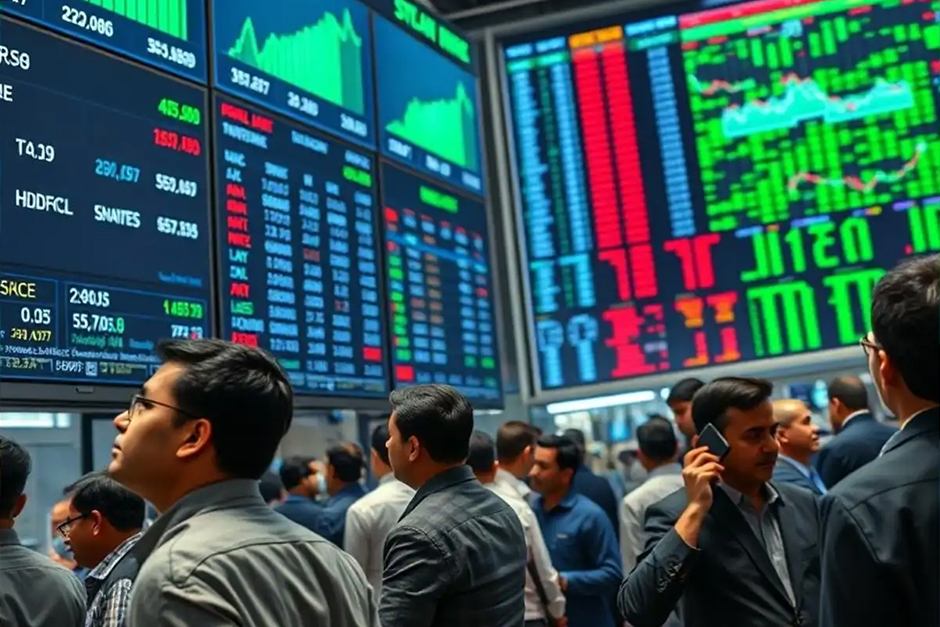The global financial landscape is a vast, interconnected web, and few events underscore this reality quite like significant volatility in one major market creating ripples across others. When US markets experience a turbulent day, characterized by sharp swings and investor uncertainty, the question quickly turns to who feels the aftershocks. Often, the spotlight falls on Asian markets, which are frequently the first to react when Wall Street closes on a down note.
The expectation that Asian stocks might falter following a volatile US trading session isn’t without precedent, yet it’s also a dynamic that deserves a nuanced understanding. It’s not simply a domino effect, but a complex interplay of investor sentiment, economic fundamentals, and regional specificities that determine the true extent of the impact.
Understanding the Trans-Pacific Echo
Why do US market jitters so often translate into headwinds for Asian equities? Several factors contribute to this phenomenon. Firstly, global investor sentiment is highly contagious. When confidence wanes in a market as influential as the United States, it tends to dampen enthusiasm across the board. Institutional investors, managing vast global portfolios, often de-risk by selling off assets in perceived higher-risk or emerging markets, which can include many Asian economies.
Secondly, trade and supply chain linkages play a crucial role. Many Asian economies are significant exporters to the US and Europe. A slowdown in American consumer spending or corporate investment, often signaled by market volatility, can directly impact demand for Asian-made goods and services. Conversely, a flight to safety in US dollar assets can strengthen the dollar, making imports more expensive for Asian nations and potentially increasing their foreign debt burdens.
Thirdly, interest rate expectations are a major driver. US Federal Reserve actions and market expectations regarding future interest rate hikes or cuts can influence global capital flows. If US volatility is tied to concerns about inflation or aggressive Fed tightening, it can lead to capital outflow from Asian markets as investors seek higher yields or safer havens elsewhere.
Resilience vs. Vulnerability: A Differentiated Impact
While the gravitational pull of US markets is strong, it’s crucial to avoid painting all Asian markets with the same brush. Asia is a diverse continent, home to economies with varying strengths, vulnerabilities, and policy levers. Some economies, particularly those with strong domestic consumption bases or diversified export markets beyond just the US, might demonstrate greater resilience.
For instance, countries with robust internal demand or significant intra-Asian trade may be better insulated from a dip in Western consumer confidence. Similarly, economies that have implemented proactive fiscal or monetary policies to support their markets could cushion the blow. However, export-heavy nations, especially those deeply integrated into global supply chains dependent on US demand, might feel the pinch more acutely.
As one market observer, Dr. Anya Sharma, recently noted, “While the gravitational pull of US markets is undeniable, it’s critical to remember that Asia isn’t a single entity. Local fundamentals and policy responses will play a significant role in how individual markets weather the storm. Investors are increasingly looking beyond headline volatility to evaluate the underlying health of each economy.” This highlights the importance of granular analysis.
Some Asian markets may also benefit from strong corporate earnings in specific sectors, or from a growing middle class driving domestic consumption. Conversely, those grappling with internal economic challenges, high debt levels, or persistent inflation might find their vulnerabilities exposed by external shocks.
Navigating the Expected Downturn
The expectation of a fall in Asian stocks following US market volatility is a logical starting point for analysis, but it’s rarely the full story. While initial reactions often see broad-based declines as investors react to global sentiment, the longer-term performance will depend on a multitude of factors. These include the underlying economic health of individual Asian nations, the effectiveness of their policy responses, corporate earnings reports, and the evolving global economic outlook.
For investors, this means looking beyond the immediate headlines and understanding the interconnected yet distinct nature of global financial markets. While a volatile day in the US certainly sets a challenging tone for Asian trading, the ultimate trajectory will be shaped by a complex interplay of macroeconomics, corporate performance, and localized resilience.




